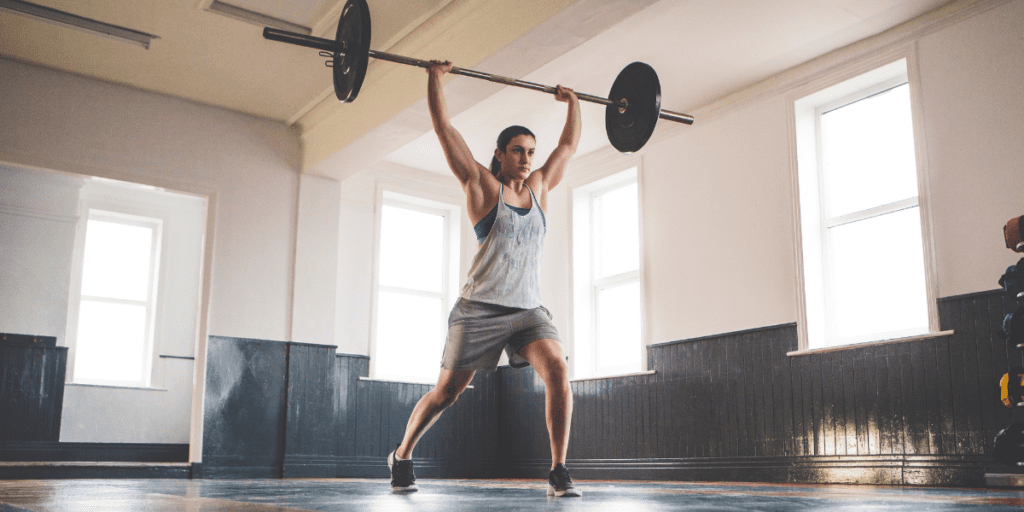Shoulder pain during overhead presses is a common concern among weightlifters and fitness enthusiasts. It not only hampers workout performance but can also lead to long-term issues if not addressed properly. In this comprehensive guide, we will explore the underlying causes of overhead press shoulder pain and provide practical strategies to alleviate discomfort and prevent injury.

Understanding the Causes of Overhead Press Shoulder Pain
Incorrect Technique:
Improper form during overhead presses is a primary culprit behind shoulder pain. Actions such as arching the back excessively, flaring the elbows out too much, or failing to stabilize the core can place undue stress on the shoulder joint and surrounding muscles.
Muscle Weakness or Imbalance:
Weakness or imbalance in the muscles supporting the shoulder joint, including the deltoids, rotator cuff muscles, and upper back muscles, can contribute to shoulder pain. When certain muscles are underdeveloped, others may overcompensate, leading to strain and discomfort.
Shoulder Impingement:
Shoulder impingement occurs when the tendons of the rotator cuff muscles or the bursa in the shoulder joint become pinched or compressed, typically due to repetitive overhead movements. This can result in pain and inflammation, especially during exercises like overhead presses.
Overuse and Fatigue:
Overtraining or performing overhead presses too frequently without adequate rest can lead to muscle fatigue and overuse injuries. The shoulder muscles may become strained or irritated, causing pain and discomfort during exercise.


Strategies to Alleviate Overhead Press Shoulder Pain
Focus on Proper Technique:
Prioritize form over lifting heavy weights. Maintain a straight back, engage your core, and keep your elbows slightly in front of your body throughout the movement. Avoid locking out your elbows at the top of the press to prevent excessive strain on the shoulder joints.
Strengthen Supporting Muscles:
Incorporate exercises targeting the muscles surrounding the shoulders and upper back into your routine. Rows, lateral raises, face pulls, and external rotation exercises can improve shoulder stability and reduce the risk of injury during overhead presses.
Warm-Up Adequately:
Before starting your overhead press workout, warm up your shoulder joints and muscles with dynamic stretches and mobility exercises. This helps increase blood flow, improve flexibility, and reduce the risk of injury.
Limit Range of Motion if Necessary:
If you experience significant shoulder pain during overhead presses, consider reducing the range of motion by lowering the weight or adjusting the exercise variation. Partial range-of-motion overhead presses or using dumbbells instead of a barbell may alleviate discomfort.
Incorporate Rotator Cuff Exercises:
Include specific exercises targeting the rotator cuff muscles, such as external rotations with resistance bands or cable machines. Strengthening these muscles can enhance shoulder stability and reduce the risk of impingement-related pain during overhead presses.
Ensure Adequate Recovery:
Allow sufficient time for rest and recovery between overhead press sessions to prevent overuse injuries. Listen to your body and avoid pushing through pain or discomfort during workouts.
Seek Professional Guidance:
If shoulder pain persists despite modifications to your overhead press technique and training routine, consider seeking guidance from a qualified fitness trainer or physical therapist. They can assess your form, identify underlying issues, and provide personalized recommendations for rehabilitation and injury prevention.


Final Thoughts
If overhead press shoulder pain is hindering your workout routine and affecting your quality of life, it’s time to take action. Don’t let discomfort hold you back from reaching your fitness goals. Our team of experienced physical therapists is here to help you overcome shoulder pain and regain strength and mobility. Schedule a consultation today to receive personalized treatment plans tailored to your needs. Let us guide you on the path to a pain-free and active lifestyle. Take the first step towards better shoulder health and book your appointment now.
